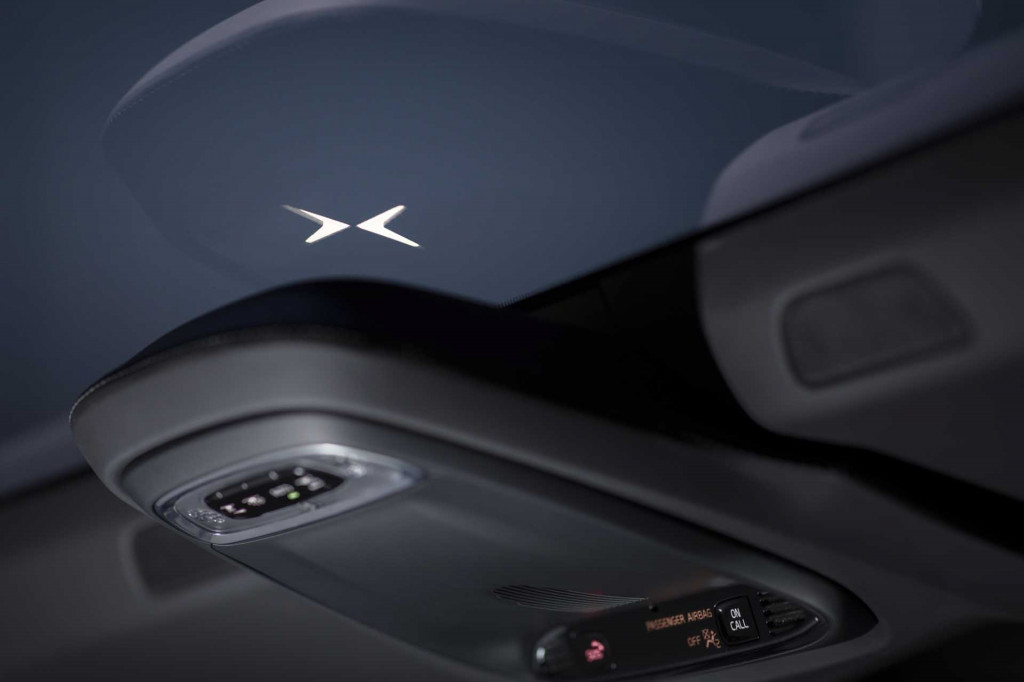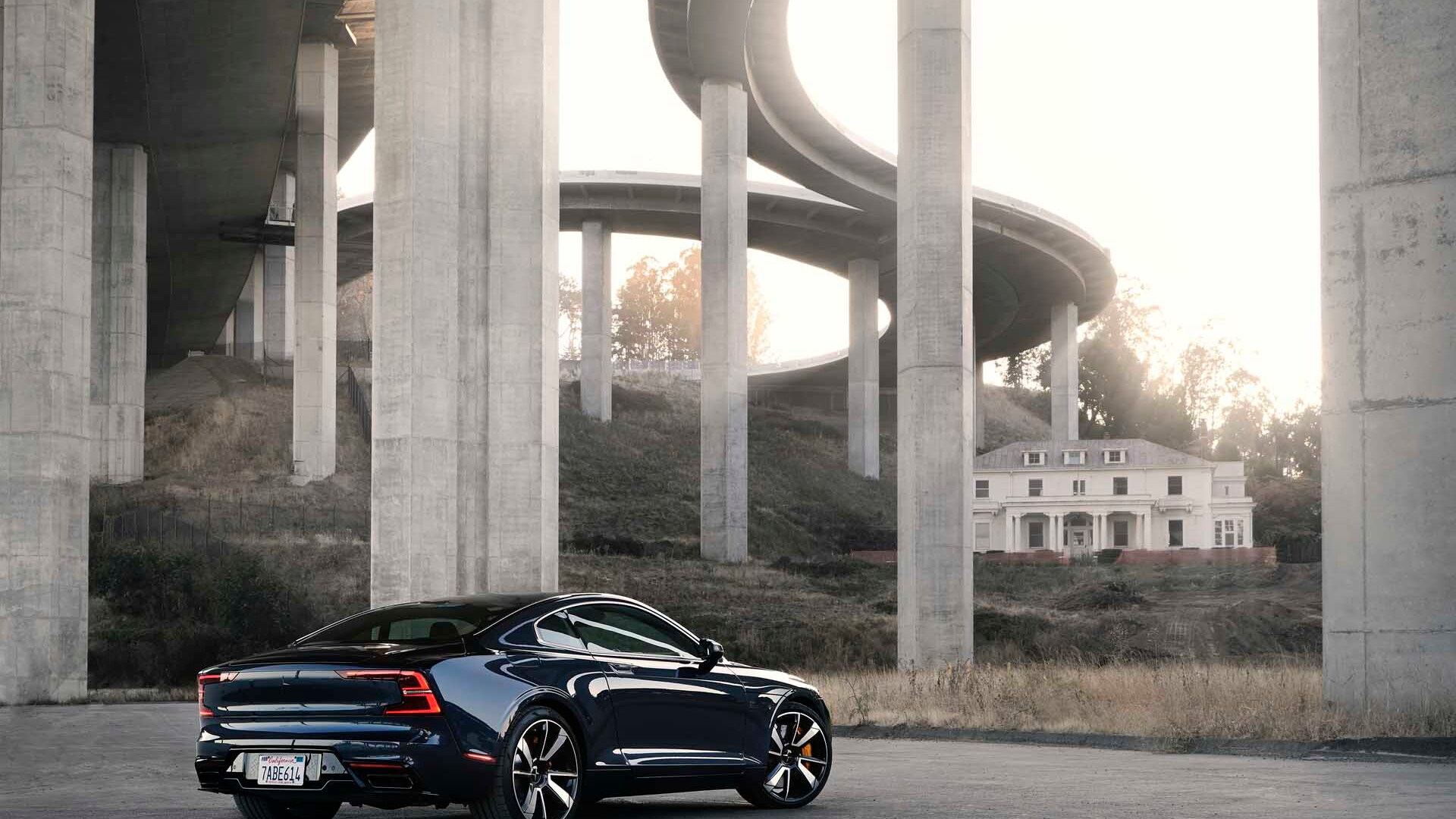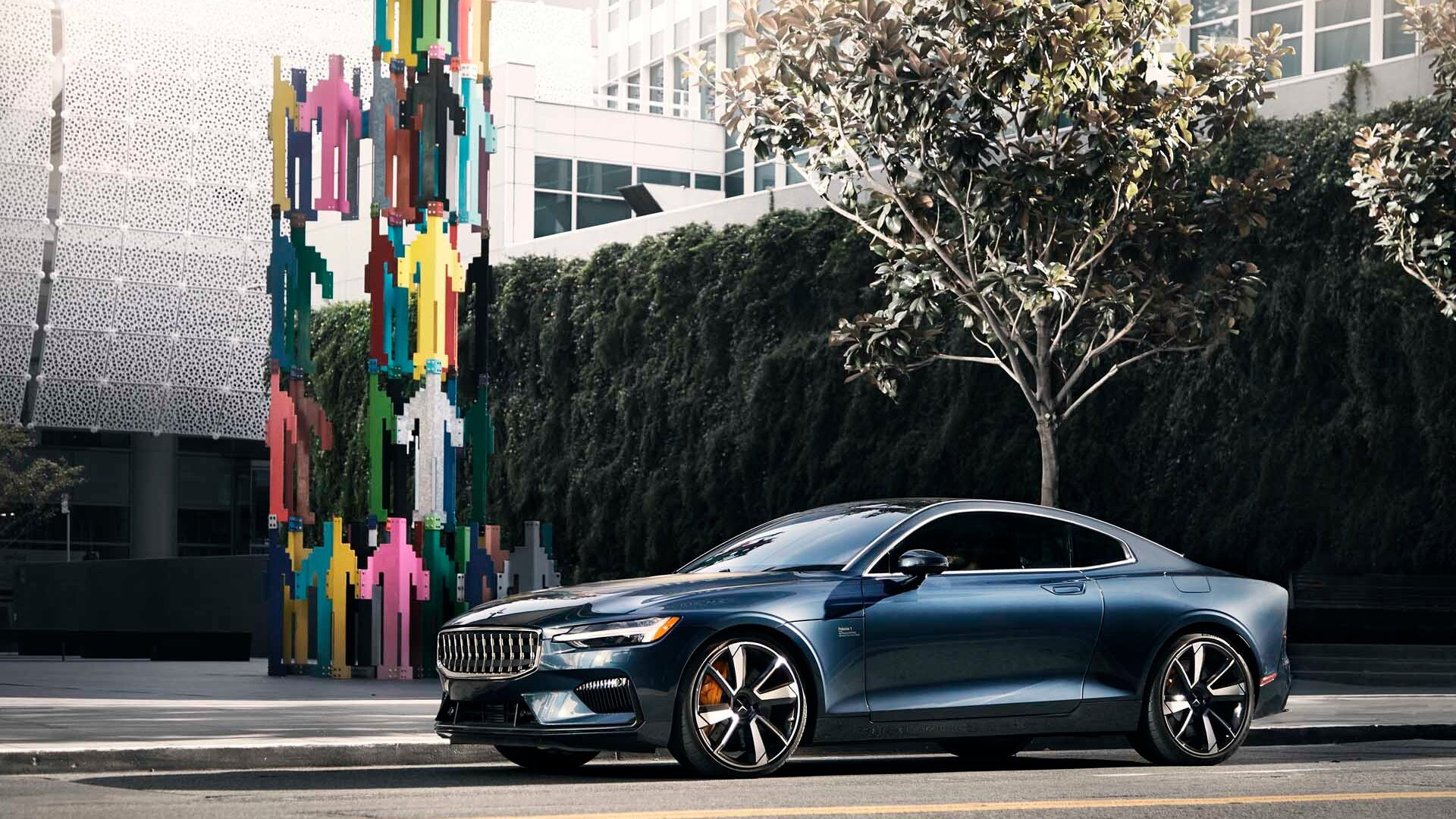To start with the 2020 Polestar 1 we should go to the end.
The first car from the newborn carmaker that counts parents from Volvo and Geely has a secret that’s not easily seen, tucked away.
Underneath the carbon fiber body, behind the turbocharged and supercharged inline-4, and alongside the exposed wiring in the trunk with seven bright orange connectors behind scratch-resistant glass, Polestar 1’s secret is waiting.
It’s the rear end. Sophomoric jokes aside, it’s the million-dollar rear end that codifies the front end of Polestar’s push into electrified performance possible. From behind the wheel, the Polestar 1 takes corners like few cars on the road today. In all likelihood, the Polestar 1 will be the only vehicle in the automaker’s portfolio that ever takes unleaded, too. Future vehicles from the brand are confirmed as all-electric, but none have the buzz of the Polestar 1’s backside.
And it’s unclear if it’ll ever appear again.

2020 Polestar 1 first drive
Unobtainium
That’s not just because the Polestar 1 is very expensive, very rare, and very both. The 2020 Polestar 1 arrives with a price tag north of $155,000, with a confirmed production of just 500 per year for three years. Interested buyers in the U.S. won’t get many, and even then, it’s highly recommended that they live near one of 18 Polestar locations confirmed for North America already, which are mostly found along the coasts.
The Polestar 1 is one of very few cars to use twin electric motors on the same rear axle, which gives the two-door grand-tourer true torque vectoring. Although many automakers claim that their cars push torque from side to side, few actually do—even fewer have ever done it honestly.
That’s because most torque vectoring systems use brake-based systems that grab wayward wheels. Some use electronic differentials to push some power left to right along with the brake-based setup, but few have used a true system in the same neighborhood as Polestar's
The Polestar 1’s twin 113-horsepower electric motors on the rear axle play in the corners. Both motors use a 1:6 planetary gear to drive their corresponding rear wheel as hard and efficiently as they can around every bend, arc, curve, and angle imaginable. Chief test driver and chassis engineer Joakim Rydholm keyed in the torque split and chassis response better than Frederic Chopin. The Polestar 1 plays in the corners alone, second to none for its price.

2020 Polestar 1 first drive
Steering with your right foot takes on a new meaning in the Polestar 1, too. For each of the hundreds of corners I found in the Northern California hills outside Woodside, the Polestar 1 begged for more speed through the middle, egging on my right foot past entry, deep into the meaty apex, and far past the normal exit with a confident tail that felt unflappable. By the time I was done with the Polestar 1, I was not only carving hairpins at extra-legal speeds—they were damn near highway speeds—I was second-guessing everything I thought I knew about cornering.
Despite the 5,180-pound mass, the Polestar 1 hardly feels like it’s gone too long on Ben & Jerry’s. The 48/52 front-to-rear weight balance hardly loads up the front, and even then, it has exponentially fewer cylinders up front than some of its other grand-touring competition. One of the few times the Polestar 1 feels like a heavyweight is when the suspension unloads; a harrowing gut-check that even if the car is all carbon fiber, your nerves certainly aren’t.
A turbocharged and supercharged 326-hp inline-4 borrowed from Volvo powers the Polestar’s front wheels alone. Although it powers a motor-generator that feeds power to the 34-kilowatt-hour lithium-ion batteries tucked into (what would be) the transmission tunnel and rear trunk bulkhead, the internal combustion engine never clutches in to power the rear wheels at all.
Having a lithe motor up front has its perks. It pushes total output for the Polestar 1 to more than 600 hp without compromising handling or weight distribution.
In Hybrid, AWD, or Power drive modes, the busy inline-4 keeps pace with the twin motors in the rear and claws the front wheels ahead through corners—what you’d expect from an all-wheel-drive performance car.
The rear motors furiously carve ever-tighter lines around the corners. Only the staggered-width Pirelli P-Zero tires, 275/30 in front and 295/30 in back, let out indications that the Polestar 1 may be approaching some limit—your limit, their limit, the speed limit—just not the car’s limit.

2020 Polestar 1 first drive

2020 Polestar 1 first drive

2020 Polestar 1 first drive
Looks to thrill
There are fewer limits on the Polestar 1’s good taste, too. From the outside, the two-door coupe draws a close line to Volvo, but diverges in all the right places.
The rear window’s Hoffmeister kink pushes buttons that Volvo never could. Although the Polestar 1 uses the same floor as the S90, chopped by more than 7.8 inches between the wheels, the sedan and coupe look like cousins—not siblings.
Same goes for the brand’s philosophy. Polestar only has 18 locations in place in the U.S. so far, elegant galleries with two show cars, two test demos, and a non-commissioned product expert that will tell you how to live with the Polestar—not necessarily sell you on it.
“We are a child of Volvo,” said Polestar boss Thomas Ingenlath, but added that, “we said goodbye to a lot of the clichés of the car industry.”

2020 Polestar 1 first drive
That’s high-minded for a brand just starting out, but Polestar’s goals come back to earth in the accelerated timeline it was given to start.
Work on the Polestar 1 began in 2015, according to project leader Sofia Bjornesson. She joined in April 2016 and launched the car all over the world for the last two months. Four years from concept to production is ambitious for any automaker, but doubly so for one that’s a new brand too.
Although the body and rear-end feel like a million bucks, the interior’s decidedly $50,000. That’s because many things from the touchscreen to the switchgear to the instrument cluster and more is borrowed from Volvo for the Polestar 1's cabin. Volvo’s interiors have never been a letdown, but they also don’t normally cost six figures on a low-production vehicle that’s as difficult to find as the Polestar 1.
We could go on about the potential for Polestar’s EV in the years to come, but even Bjornesson said she’s not sure if any models will adopt the 1’s rear end.
That would be a shame. As far as ends go, it's a helluva beginning.
Polestar provided travel and lodging to Internet Brands Automotive to bring you this firsthand report.






